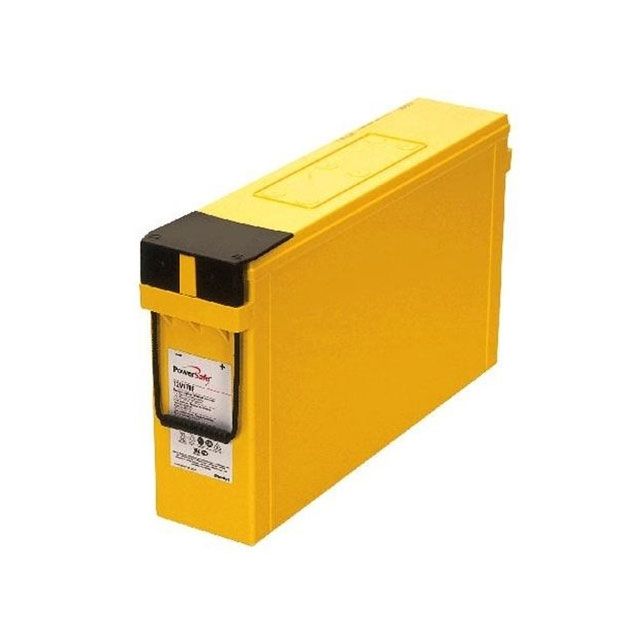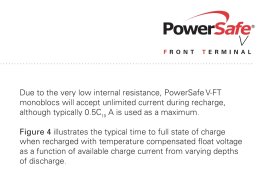You are using an out of date browser. It may not display this or other websites correctly.
You should upgrade or use an alternative browser.
You should upgrade or use an alternative browser.
Maximum charge rate.... What is 0.5c¹⁰amp ??
- Thread starter SamDeleted
- Start date
mikefitz
Solar Wizard
- Joined
- May 28, 2020
- Messages
- 3,018
Lead acid battery capacity is specified at certain discharge rates . Your battery specification should tell you if the rate is, 100 hours, 20 hours or 10 hours. The 10 hour rate is powering a load for 10 hours, full to empty.
According to Tayna batteries your Powersafe is specified at the 10 hour rate,

 www.tayna.co.uk
www.tayna.co.uk
According to Tayna batteries your Powersafe is specified at the 10 hour rate,

12V170FS EnerSys PowerSafe AGM Battery 12v 170Ah
12V170FS EnerSys PowerSafe V-FT VRLA Battery The EnerSys brand has been in the battery industry for over 100 years and is considered as one of the most trusted of the battery giants in the industry. Delivering energy storage systems and application solutions to customers globally. Known for...
Last edited:
Lead acid battery capacity is specified at certain discharge rates . Your battery specification should tell you if the rate is, 100 hours, 20 hours or 10 hours. My guess is your 170 Ah is at the 100 or 20 hour rate and the capacity at the 10 hour rate will be nearer 150 Ah.
I think 170ah is the 10hr rate from memory let me check
@mikefitz
Capacity (C10)170 Ah

 www.tayna.co.uk
www.tayna.co.uk
But I'm more looking for the maximum charge rate
Capacity (C10)170 Ah

12V170FS EnerSys PowerSafe AGM Battery 12v 170Ah
The PowerSafe® V-FT Range with front positional terminals has been designed specifically for the use in applications that demand the highest levels of reliability and security. PowerSafe V-FT batteries are worldwide recognised as an excellent solution for Telecoms applications. The PowerSafe...
But I'm more looking for the maximum charge rate
Zwy
Emperor Of Solar
Mike has it correct. The small 10 is denoting it is a 10 hour rated battery, in other words, at the 10 hour charge and discharge rate, the battery capacity is 170Ah.
Take the 170 divided by 10= 17A
17A x 0.5C= 8.5A charge rate typically used as a maximum
The battery can be charged at a higher rate, but that may affect battery longevity.
Take the 170 divided by 10= 17A
17A x 0.5C= 8.5A charge rate typically used as a maximum
The battery can be charged at a higher rate, but that may affect battery longevity.
Zwy
Emperor Of Solar
From what I found on Enersys site, it is a telco application.Max charge rate , cyclic use, from data sheet 0.5 C, 85 amps. Seems a bit high to me for an AGM battery, I would expect 0.2C to 0.3C.
Is the battery new or SH from a telecommunications application?
Zwy
Emperor Of Solar
I'm editing here to prevent some confusion. I did look at the manual on Enersys and it did not have graphs. I did run across this manual, https://manuals.plus/enersys/v-ft-powersafe-battery-manual#axzz83697prdOMike has it correct. The small 10 is denoting it is a 10 hour rated battery, in other words, at the 10 hour charge and discharge rate, the battery capacity is 170Ah.
Take the 170 divided by 10= 17A
17A x 0.5C= 8.5A charge rate typically used as a maximum
The battery can be charged at a higher rate, but that may affect battery longevity.
It is a VRLA battery and most of those are limited to max 0.3C. Most VRLA are charged at a constant voltage with current limiting. For this battery, 2.4V per cell max and needs to be compensated for temperature. Any charging will need temperature compensation.
According to this manual and the graphs contained within, it appears the battery would be fully charged in less than 4 hours hours at the 2.4Vpc rate. That would not be possible with 8.5A. The manual also states the battery is able to be fast charged and accepts high charge rates.
If I was charging this battery, I would use 0.3C rate as any maximum. I would also contact Enersys and ask them to explain the charge rate.
Is the battery new or SH from a telecommunications application?
Ex telecoms , well used !
If I was charging this battery, I would use 0.3C rate as any maximum.
Yes very confusing , but I'll stick to 0.3c that sounds sensible
AGM battery maximum charge rate
I am trying to calculate the maximum charge rate of my AGM powersafe batteries 12 V 170 Ah, the data sheet says it's "0.5c¹⁰ amps" I think 0.5 C makes 85 A, but not sure about the 10 to the
The smart folk over at stack exchange are just as puzzled , I'm going to ring the manufacturer tomorrow
Warpspeed
Solar Wizard
I have never understood why people wish to know what the absolute maximum of anything is, right up to the point of permanent damage or destruction, then decide to routinely run it at that level.
Zwy
Emperor Of Solar
One should know what the max charge rate should be so it is never exceeded.I have never understood why people wish to know what the absolute maximum of anything is, right up to the point of permanent damage or destruction, then decide to routinely run it at that level.
Warpspeed
Solar Wizard
Yes quite so.
But many people do not seem to understand that de rating equipment is usually very necessary for long term reliability.
But many people do not seem to understand that de rating equipment is usually very necessary for long term reliability.
Zwy
Emperor Of Solar
Yes quite so.
I agree, I de rate items all the time.But many people do not seem to understand that de rating equipment is usually very necessary for long term reliability.
Warpspeed
Solar Wizard
Quite often you can stress something to the max when its brand new without too many surprises.
But doing that regularly, can quickly age it to the point where it becomes unsafe and progressive damage sets in.
Manufacturers specifications, recommendations, and limits, need some understanding, and sometimes cannot be taken directly at face value.
But doing that regularly, can quickly age it to the point where it becomes unsafe and progressive damage sets in.
Manufacturers specifications, recommendations, and limits, need some understanding, and sometimes cannot be taken directly at face value.
Yes quite so.
But many people do not seem to understand that de rating equipment is usually very necessary for long term reliability.
They are 11 years old so they're probably going to need a soft touch
BUT! It's very hard to derate when you don't know the rate in the first place
Warpspeed
Solar Wizard
Haha, very true !BUT! It's very hard to derate when you don't know the rate in the first place
Similar threads
- Replies
- 29
- Views
- 1K
- Replies
- 3
- Views
- 605
- Replies
- 13
- Views
- 522




